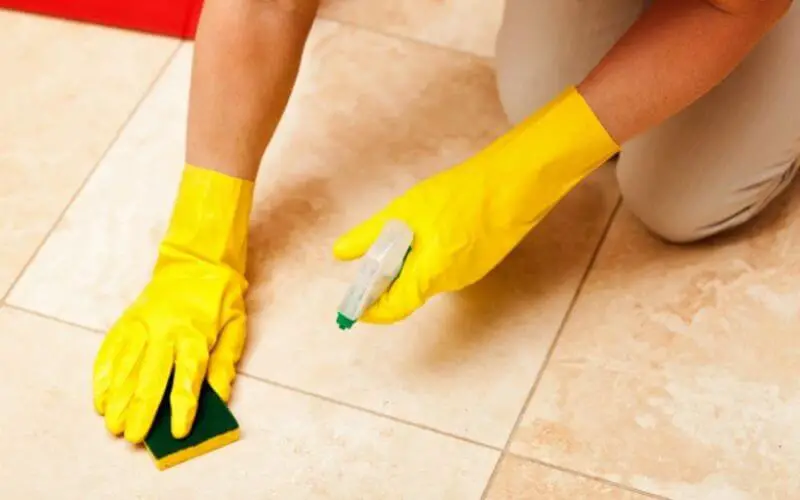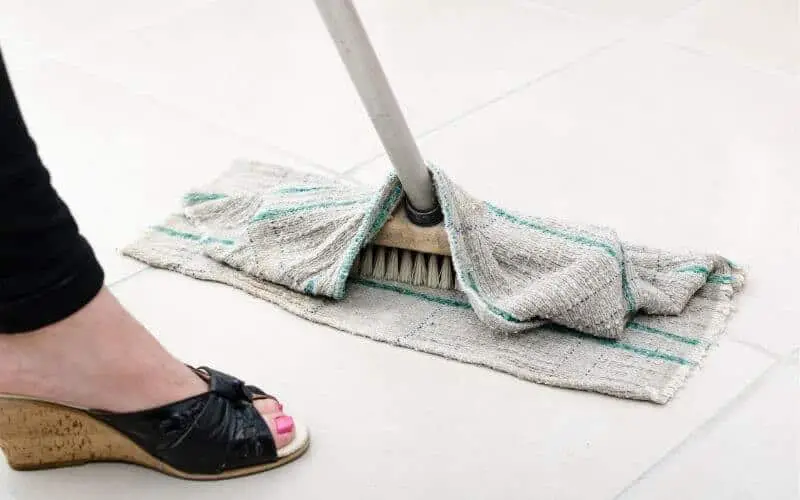Why do most homeowners prefer porcelain floor tiles? Well, for one, they are incredibly durable and pretty easy to keep clean. In addition, they’re moisture-resistant – it follows that spills can easily be wiped off with a damp rag without staining the tiles.
However, we are interested in how to seal porcelain tile floors. To seal your porcelain tile floor, you need to sweep or vacuum it before applying your preferred sealant with a brush or rollers. The sealant should be allowed to sit for some time before wiping off excess sealant with a rag.
Below, we will get into details on how to seal porcelain tile floors. Stay with us!
Read: 10 best cleaner for porcelain tile
What are Porcelain Tile Floors?
Table of Contents
Before getting into the main gist, let’s examine what exactly are these types of floorings.
Funny enough, porcelain has been around for centuries, although not necessarily used as tile floors. Cultures all around the world valued porcelain for its delicate shine, smooth texture, and elegant look. It was used in various decorations like for making dolls and fine China.
In recent times, porcelain has transcended beyond its use for decorations, and it’s now a popular material for residential flooring all over America.
Porcelain tiles are made from clay. When clay is exposed to searing hot temperatures (around 2,300 to 2,400 degrees Fahrenheit), the finished product is porcelain tiles.
Read: How to make porcelain tile shine
Do You Need to Seal Porcelain Floor Tiles?
There are certain arguments on whether or not you need to seal porcelain tile floors. Admittedly not all types of porcelain floor tiles need to be sealed.
Fully vitrified or glazed porcelains do not need sealing because they are non-porous. However, if you want to alter the color, you can use a micro top-coat sealer to change the color.
As we know, there are certain advantages of sealing tile floors. Sealing protects the exterior of the porcelain tile from stains and dirt. Also, sealing protects your porcelain tiles against organic growth.
Lastly, if you notice that porcelain floor tiles lack color or have a washed-out grainy appearance, sealing can remedy that.
Read: How to clean matte porcelain tiles
How to Seal Porcelain Tile Floor
1. Make Sure that the Porcelain Floor Tiles Needs to be Sealed
First thing first, you need to determine if your porcelain floor tile needs to be sealed. For instance, glazed porcelain floor tiles have an extra layer of glass that protects them from stains and thus don’t need to be sealed.
How then can you differentiate glazed tiles from unglazed tiles? Glazed tiles tend to be slightly thinner than unglazed tiles, and they are less likely to be colored all the way through.
However, even though it’s not exactly necessary to seal glazed porcelain floor tiles, nothing stops you. You always need that extra layer of protection.
2. Clean your Porcelain Floor Tiles
Start by cleaning your porcelain floor tiles. First, remove all loose dirt by sweeping or vacuuming, then clean with a cleaning solution. You can either opt for commercial or DIY cleaning solutions.
For a DIY cleaning solution, mix ¼ cup of vinegar with 2 gallons of warm water, then use a microfiber mop to clean. If you’re dealing with strong stains, you might have to use heavy-duty commercial cleaners.
3. Now, Apply the Sealant
Now that your porcelain floor tiles are clean. It’s time to apply your sealant. There are no fast and hard rules to apply sealant; you can use a rag or brush to apply the sealant.
To make the work easier, you can use an applicator (it looks like a squeegee) to apply the sealant. The trick to applying the sealant is to work in small areas.
Read: How to seal hardwood floor without sanding
4. Wipe Away Residual Sealant
When you are done applying sealant, the chances are that you will have some excess sealants on the floor. Simply wipe away the excesses with a clean rag immediately. If you allow the sealant to sit for some time before cleaning, it might get sticky and difficult to clean.
If such is the case, make no attempt to clean it with water or a cleaning solution, rather apply a little more sealant over it and then wipe away the left-over sealant.
5. Allow it to Dry
Now, it’s time to allow the sealant to work its magic. The sealant fills in all the tiny holes on your porcelain floor tiles. You will need to allow the sealant to sit for an hour before stepping on it.
Read: How long does it take polyurethane to cure
The Best Sealants for Porcelain Floor Tiles
If you have decided that your porcelain floor tiles need an added layer of protection, then it’s time for you to get the perfect sealant.
The best sealants for porcelain floor tiles are either penetrating or surface sealants. Penetrating sealants are specifically designed for unglazed porcelain floor tiles as they will not ruin them. Some of the best sealants in the market for porcelain floor tiles are:
- Mapei Ultimate Penetrating SB Stone, Tile, and Grout Sealer
- GlazeGuard Gloss Ultra Durable Ceramic Porcelain Tile Sealer
- MORE Grout, Ceramic, and Porcelain Sealer
Conclusion
In the real sense, there might not be a need for you to seal your porcelain floor tiles, especially glazed ones. However, to err in the part of caution, it is recommended that you seal porcelain floor tiles.
We hope this post provided all you need to know on how to seal porcelain tile floors.

